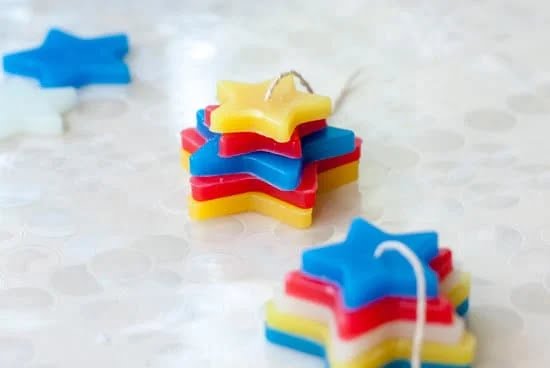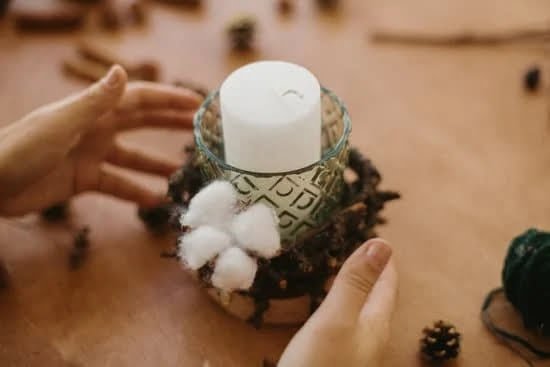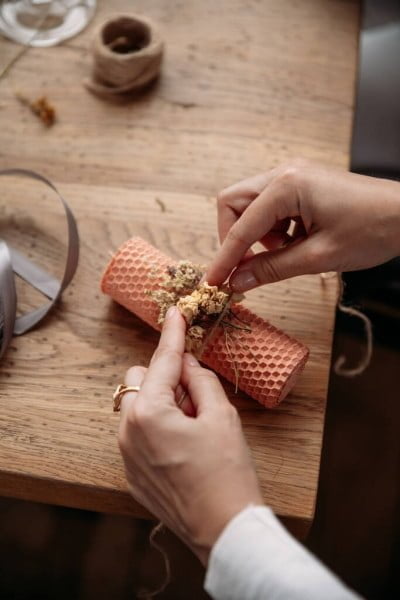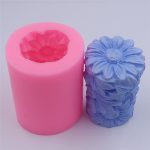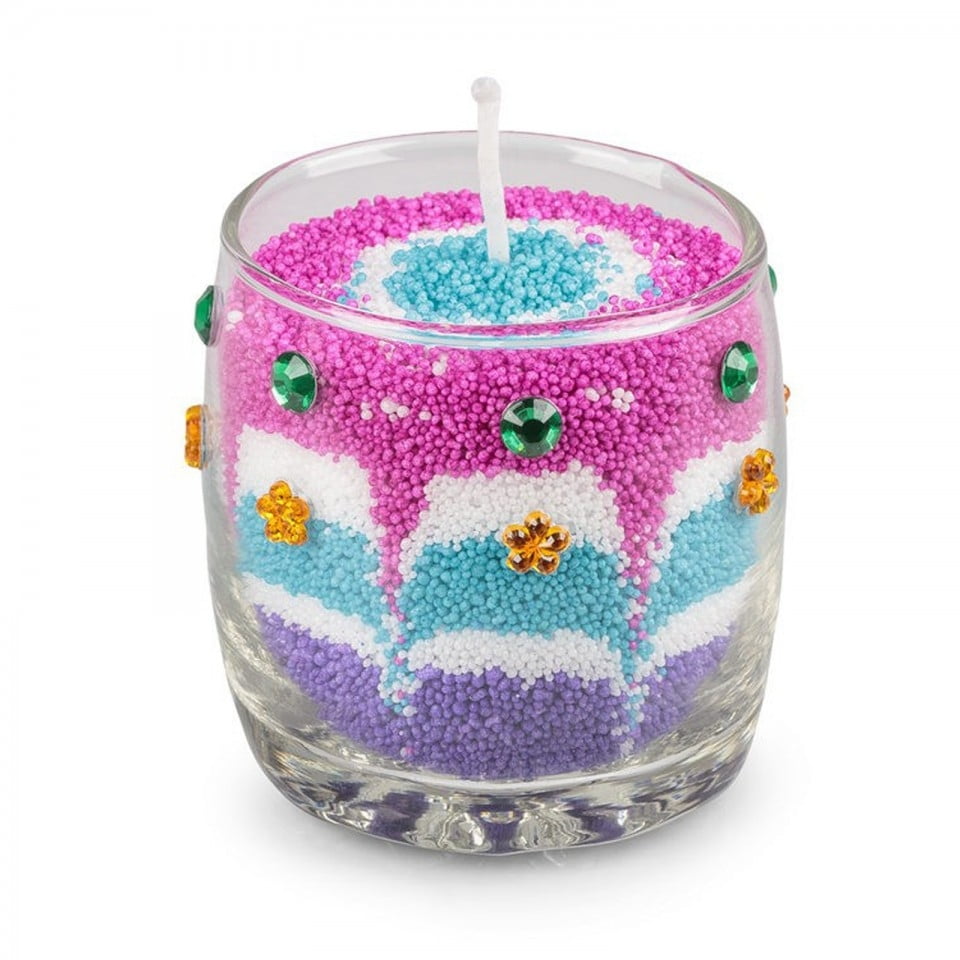Are you a candle-making enthusiast looking to create flawless, bubble-free candles? Learning how to avoid bubbles in candle making is crucial to achieving professional-looking results. Understanding the science behind the formation of bubbles in wax and taking steps to prevent them can make all the difference in producing high-quality, smooth candles.
Bubbles are a common issue that many candle makers face, but with the right knowledge and techniques, they can be easily avoided. In this article, we will explore the underlying causes of bubbles in candle making, the importance of temperature control, and tips for choosing the right wax to achieve bubble-free results.
We will also delve into the intricacies of properly mixing fragrances and colorants, as well as discuss essential equipment and tools necessary for bubble-free candle making. Additionally, we will provide techniques for pouring and molding candles to prevent bubbles from forming. And if any bubbles do appear, we’ll offer troubleshooting tips to fix them. Whether you’re a beginner or experienced crafter, mastering these techniques will help you achieve impeccable and professional-looking candles every time.
Common Causes of Bubbles in Candle Making
When making candles, bubbles can be a common problem that arises during the process. Understanding the potential causes of bubbles in candle making is essential to creating smooth and professional-looking candles. By identifying and addressing these common causes, you can avoid bubbles altogether and achieve a flawless finished product.
Here are some common causes of bubbles in candle making and how to avoid them:
1. Overheating the Wax: When wax is heated at too high of a temperature, it can lead to the formation of air bubbles. To avoid this, it’s important to closely monitor the temperature of the wax as it melts. Use a thermometer to ensure that the wax reaches the optimal temperature for pouring without overheating.
2. Rapid Cooling: If the melted wax cools too quickly after pouring, it can trap air within the candle and create bubbles. To prevent rapid cooling, consider pre-heating your molds or containers before pouring in the wax. This will help maintain an even temperature as the candles set.
3. Improper Mixing: Inadequate mixing of fragrance oils or colorants into the melted wax can also lead to the formation of bubbles. To avoid this, make sure to thoroughly stir in any additives using a gentle and consistent motion.
By understanding these common causes of bubbles in candle making and following these tips on how to avoid them, you can produce beautiful, bubble-free candles every time.
Choosing the Right Wax to Avoid Bubbles
Candle making can be a fun and rewarding hobby, but one of the biggest challenges for beginners is avoiding bubbles in their finished products. Understanding the science behind bubbles in candle making is crucial to mastering this art. When wax is heated and then cooled, it undergoes a process of expansion and contraction. If the wax cools too quickly or unevenly, bubbles can form within the candle.
One of the common causes of bubbles in candle making is using the wrong type of wax. Some waxes are more prone to bubbling than others due to their composition and melting point. To avoid this issue, it’s important to choose the right wax for your specific candle-making needs. Soy wax, for example, has a lower melting point and is less likely to trap air bubbles compared to paraffin wax.
Another key factor in preventing bubbles in candle making is proper temperature control. Heating the wax too quickly or at too high of a temperature can result in trapped air and ultimately lead to bubbles in the finished product. Maintaining a consistent temperature throughout the melting, mixing, and pouring process is essential for achieving bubble-free candles.
| Wax Type | Likelihood of Bubbles |
|---|---|
| Soy Wax | Low likelihood due to lower melting point |
| Paraffin Wax | Higher likelihood due to higher melting point |
Importance of Proper Temperature Control in Candle Making
When it comes to candle making, temperature control is one of the most important factors in ensuring a bubble-free finished product. Understanding the role of temperature in the candle making process is crucial for achieving smooth and professional-looking candles. In this section, we will explore the importance of proper temperature control in candle making and how it can help you avoid bubbles in your candles.
Understanding the Impact of Temperature
The temperature at which you melt, add fragrance, and pour your wax can greatly affect the outcome of your candles. If the temperature is too high or too low, it can lead to the formation of bubbles in your candles. When wax is heated to extreme temperatures, it can trap air inside, leading to unsightly bubbles once the candle solidifies. Similarly, adding fragrance oils or colorants at incorrect temperatures can also result in bubbly candles.
Choosing the Right Melting and Pouring Temperatures
To avoid bubbles in candle making, it’s important to carefully monitor and control the temperatures at which you melt and pour your wax. Different types of waxes have different melting points, so be sure to follow the manufacturer’s recommendations for optimal melting temperature. Additionally, when pouring your wax into molds or containers, make sure that both the wax and the vessel are at an appropriate temperature to prevent air from getting trapped as the wax cools.
Using a Quality Thermometer
Investing in a reliable thermometer designed specifically for candle making is essential for achieving proper temperature control. A good quality thermometer will allow you to accurately monitor the temperature of your wax throughout each stage of the candle making process, helping you avoid bubbles caused by improper temperatures.
By understanding how proper temperature control impacts candle making and following best practices for managing temperatures during each step of the process, you can significantly reduce the likelihood of encountering bubbles in your finished candles.
Tips and Techniques for Properly Mixing Fragrances and Colorants
When it comes to making candles, properly mixing fragrances and colorants is essential to avoid bubbles in your final product. Whether you are using essential oils, synthetic fragrances, or natural dyes, the proper technique will make all the difference in achieving a smooth and bubble-free finish. Here are some tips and techniques to help you master this important step in candle making:
First, it’s important to measure your fragrance and colorant carefully. Using too much can lead to issues with bubbles and can affect the overall quality of your candle. Be sure to follow the recommended guidelines provided by your fragrance and colorant suppliers.
Next, consider the type of wax you are using. Some waxes may require different amounts or types of fragrance and colorant to achieve the desired result. Be sure to research and test different options to find the best combination for your specific wax type.
Properly mixing the fragrance and colorant into the melted wax is crucial for avoiding bubbles. Stir gently and consistently to ensure that they are fully incorporated without introducing excess air into the mixture. Avoid overmixing, as this can also lead to bubble formation.
As you perfect your technique for mixing fragrances and colorants into your candles, remember that practice makes perfect. Don’t be discouraged if you experience some trial and error along the way – with time and experience, you’ll be able to create beautiful, smooth candles every time.
| Tips for Mixing Fragrances | Techniques for Mixing Colorants |
|---|---|
| Measure fragrances carefully | Use recommended guidelines from supplier |
| Consider wax type for optimal results | Avoid overmixing to prevent bubble formation |
| Gently mix into melted wax thoroughly | Practice makes perfect – don’t be discouraged by trial & error |
Equipment and Tools for Bubble-Free Candle Making
When it comes to creating bubble-free candles, having the right equipment and tools can make a significant difference in the quality of your final product. Here are some essential items that you will need to invest in to ensure that your candle making process is as smooth and bubble-free as possible:
- Double Boiler: Using a double boiler rather than direct heat is essential for preventing bubbles in your wax. It helps to melt the wax evenly and eliminates the risk of overheating, which can lead to bubbling.
- Thermometer: A thermometer is crucial for monitoring the temperature of your wax. Maintaining the correct temperature is key to avoiding bubbles, so investing in a reliable thermometer is a must.
- Stirring Utensils: Quality stirring utensils such as stainless steel spoons or silicone spatulas are necessary for gentle and thorough mixing of fragrances and colorants into the wax without introducing air bubbles.
In addition to these essential items, there are other tools and equipment that can aid in achieving bubble-free candles. These include:
- Pouring Pitcher: A pouring pitcher with a narrow spout allows for precise pouring, reducing the likelihood of introducing air into the wax while pouring it into molds or containers.
- Candle Molds: Investing in high-quality candle molds made of materials like silicone or metal can help ensure smooth and flawless candle surfaces without any trapped air bubbles.
- Heat Gun: A heat gun can be used to eliminate any surface imperfections such as bubbles by carefully applying heat to the top of the candle once it has been poured and while it is still in its liquid state.
By having these equipment and tools on hand, you can significantly improve your chances of creating beautiful, bubble-free candles. However, it’s also important to note that proper technique and careful attention during each step of the candle making process are equally important in achieving professional-looking results.
Techniques for Pouring and Molding to Prevent Bubbles
Slow and Steady Pouring
When it comes to pouring the melted wax into candle molds, one of the key techniques for preventing bubbles is to pour slowly and steadily. Rapid pouring can create turbulence in the wax, leading to the formation of air bubbles. By pouring the wax at a controlled pace, you can minimize the chances of bubbles forming. Additionally, try to pour from a low height to further reduce air entrapment in the wax.
Properly Preparing the Molds
Another important factor in preventing bubbles during candle making is ensuring that the molds are properly prepared. Before pouring the wax, make sure that the molds are clean, dry, and at room temperature. Any moisture or residue in the mold can lead to bubble formation. Additionally, consider preheating metal or glass molds slightly to further reduce the risk of bubbles.
Using Release Agents
In some cases, using a release agent can help prevent bubbles from forming in molded candles. A thin layer of mold release spray or oil can help create a smooth surface inside the mold, reducing the likelihood of air pockets and bubbles forming as the wax cools and solidifies. Be cautious with using release agents on certain types of molds as it may affect their quality or appearance.
By employing these techniques for pouring and molding candles, you can significantly reduce the occurrence of unsightly bubbles in your finished products. Remember that patience and attention to detail are crucial when aiming for bubble-free candles, and mastering these pouring and molding techniques will contribute to achieving professional-quality results every time.
Final Steps and Tricks for Achieving Smooth and Bubble-Free Candles
After taking care of all the previous steps in candle making, it’s important to pay close attention to the final steps and tricks to ensure that your candles turn out smooth and free from bubbles. Even with all the proper preparation, mistakes made during the final stages can still lead to blemishes on your finished product. This section will provide essential tips and techniques for achieving flawless candles.
To avoid bubbles in candle making, one must be mindful of the temperature when pouring the wax into molds or containers. If the wax is too hot, it can create air pockets and bubbles as it cools. It’s crucial to allow the wax to cool slightly before pouring, but not so much that it begins to solidify. Finding the right balance is key to preventing unsightly bubbles in your candles.
Furthermore, paying attention to the cooling process is equally important in achieving bubble-free candles. Rapid changes in temperature during cooling can also lead to imperfections such as sinkholes or air pockets.
To prevent this, it’s recommended to allow your candles to cool slowly at room temperature without any sudden shifts in climate. By employing these final steps and tricks, you can ensure that your candles are smooth and free from any unwanted bubbles, providing a professional finish every time.
Troubleshooting
When making candles, sometimes it is inevitable for bubbles to appear despite taking all the necessary precautions. Bubbles can be a frustrating issue, but there are several ways to fix them if they do appear during the candle-making process.
One of the most common causes of bubbles in candles is improper pouring and molding techniques. If you notice bubbles forming as you pour the wax into the mold, try gently tapping the sides of the mold to release any air pockets. Additionally, make sure to pour the wax slowly and steadily to minimize air entrapment. If bubbles have already formed in your candle, you can try using a heat gun or a small torch to carefully pop them.
Another method for fixing bubbles in candles involves using a technique called “topping off.” This involves pouring a thin layer of melted wax over the surface of the cooled candle to fill in any holes or imperfections caused by bubbles. Make sure that the new layer of wax is poured at the same temperature as the original pour to ensure a seamless finish.
In addition, if you notice small imperfections and bubbles on your finished candle, you can use a hairdryer on low heat to smooth out the surface. Simply hold the hairdryer several inches away from the candle and move it back and forth until the imperfections disappear. Be careful not to overheat or melt the candle while using this method.
By following these troubleshooting techniques, you can effectively fix any bubbles that may appear during your candle-making process and achieve smooth and flawless candles every time. Remember that practice makes perfect, so don’t get discouraged if it takes some trial and error to master bubble-free candle making.
Conclusion
In conclusion, mastering the art of bubble-free candle making requires a deep understanding of the science behind bubbles, as well as the common causes of bubbles in candle making. Choosing the right wax and properly controlling the temperature are crucial factors in avoiding bubbles. Additionally, mastering the techniques for mixing fragrances and colorants, as well as using the right equipment and tools, can greatly contribute to achieving smooth and bubble-free candles.
Proper pouring and molding techniques are also essential in preventing bubbles from forming in your candles. Lastly, having the knowledge and skills to troubleshoot and fix any bubbles that do appear is important for any candle maker. By following these tips and techniques, you can create high-quality candles without worrying about unsightly bubbles ruining your final product.
Ultimately, achieving bubble-free candles is a combination of knowledge, experience, and attention to detail. With practice and persistence, anyone can master the art of bubble-free candle making. By implementing the tips and techniques outlined in this article, you can enjoy creating beautiful, smooth candles that are free from imperfections caused by bubbles. Whether you are a beginner or an experienced candle maker, understanding how to avoid bubbles in candle making is essential for creating professional-quality products.
Frequently Asked Questions
Why Does My Candle Have So Many Bubbles?
If your candle has a lot of bubbles, it could be due to the wax being too hot when you poured it into the container or mold. When the wax is too hot, air bubbles can get trapped and create an uneven surface.
To prevent this, try pouring the wax at a lower temperature and tapping the container gently to release any trapped air.
How Do You Keep Wax From Bubbling?
To keep wax from bubbling, it’s important to melt the wax slowly and at a controlled temperature. Rapidly heating the wax can cause air bubbles to form as well as create an uneven texture on the surface of the candle. Using a double boiler or a dedicated wax melting pot can help maintain a consistent temperature and reduce bubbling.
How Do You Make a Candle Surface Smooth?
Making a candle surface smooth involves several steps. First, ensure that you are pouring the wax at an appropriate temperature and filling the container evenly.
Once the candle has cooled and solidified, you can use a heat gun or hairdryer to carefully melt and smooth out any imperfections on the surface. Additionally, trimming any excess wick and using a flat-edged tool to even out any rough spots can also help achieve a smooth finish on your candle.

Welcome to my candle making blog! In this blog, I will be sharing my tips and tricks for making candles. I will also be sharing some of my favorite recipes.

